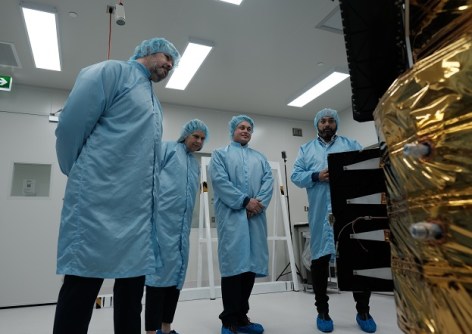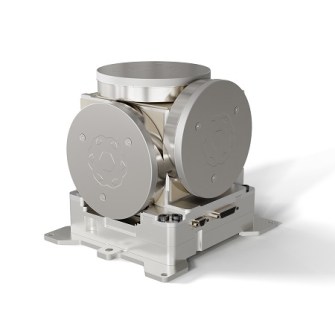
Advanced Navigation, a developer of AI for robotic and navigation technologies, has unveiled a new high-tech manufacturing facility for autonomous systems based at UTS Tech Lab in the Sydney suburb of Botany.
The company will use the facility to scale up its production of AI navigation systems for use in GPS-denied environments, including its digital fibre-optic gyroscope (DFOG) technology, Boreas.
Advanced Navigation was founded in Sydney in 2012 by engineers Xavier Orr and Chris Shaw to commercialise university research on AI-based inertial navigation.
The company says it is one of only four enterprises in the world with the capability to manufacture strategic grade fibre-optic gyroscopes, which it hopes will provide reliable non-GPS navigation for marine vessels, space missions, aerospace, defence, autonomous vehicles and flying taxis.
“There is a critical need to improve Australia’s economic complexity and sovereign capabilities,” said Xavier Orr, Advanced Navigation’s CEO and co-founder.
“A key step is to build our industrial capacity in high-tech, as well as drive knowledge exchange and propel collaborative initiatives between government agencies, academic institutions and industry leaders.”

In addition to the new manufacturing capability, the facility will be home to extensive research collaborations between Advanced Navigation and the University of Technology Sydney (UTS) and speed the commercialisation of several technologies, including:
- Light detection, altimetry and velocimetry (LiDAV) for lunar exploration, delivering precise three-dimensional velocity and altitude information relative to the lunar surface, enabling complex autonomous landing procedures. The technology will be included on US-based space systems company Intuitive Machines’ Nova-C lander as part of NASA’s ongoing Commercial Lunar Payload Services (CLPS) program.
- Cloud ground control. This will be a cloud-based solution that enables pilots and mission planners to remotely command and control a swarm of uncrewed vehicles across air, land and sea through a web browser.
- As part of the NSW Small Business Innovation and Research (SBIR) program, Advanced Navigation has developed an indoor positioning technology to support members of the visually impaired community navigate safely inside underground train stations.
“UTS is pleased to be working with Advanced Navigation to tap into critical growth areas, including AI, robotics and space technologies,” said Professor Andrew Parfitt, Vice-Chancellor and President of UTS.
“The collaboration between UTS’s global research leaders in autonomous systems technology and Advanced Navigation’s exceptional team of scientists and engineers, utilising UTS Tech Lab’s cutting-edge facilities, highlights our commitment to developing sovereign capabilities for defence and space.”












